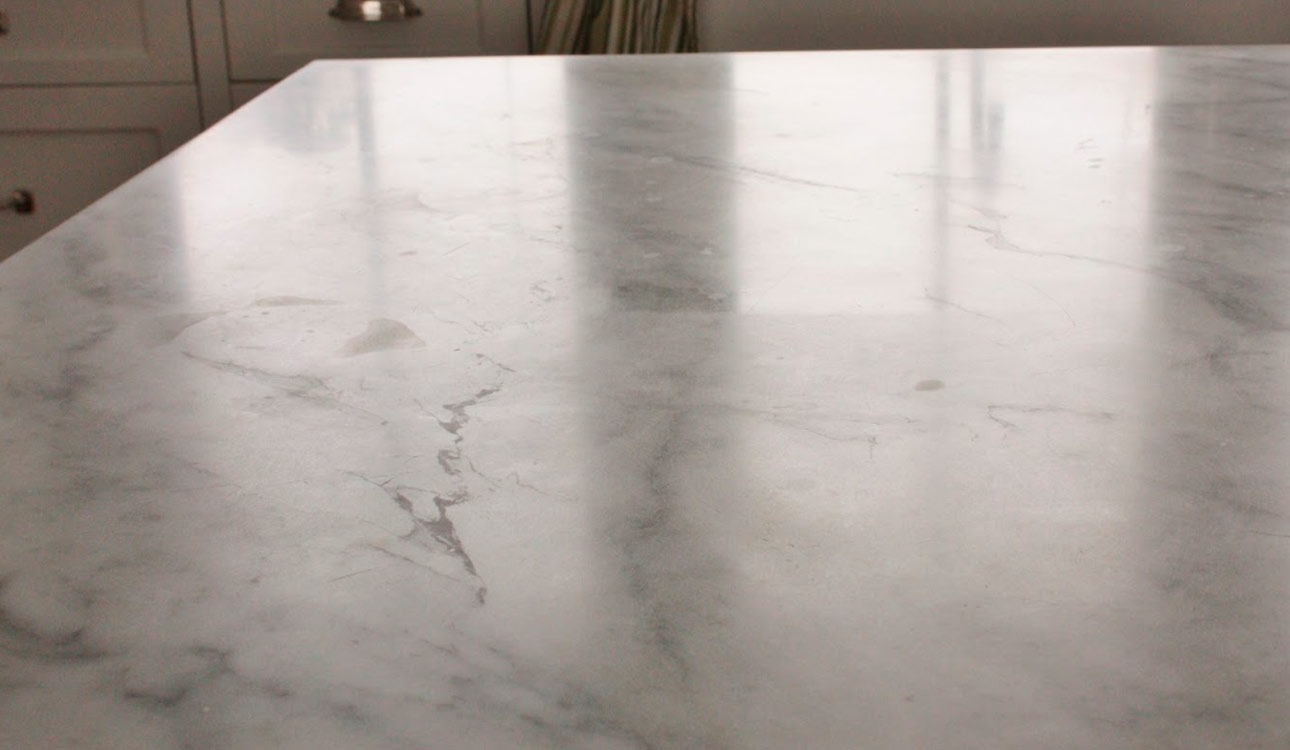Oily or Colored Substances Can Stain Marble
These are perhaps the kind of “stains” that most people are thinking of when they think of a stain. It is the additive process mentioned earlier in this article. This kind of stain happens when a colored substance is absorbed into a marble stone and then the liquid dries, leaving the color behind in the pores of the marble. These stains are not necessarily etched marks, they may only be stains. These stains can be removed from marble using a specially formulated poultice powder designed to reverse the staining process.
Stained Etching Can Occur in Marble
So what happens when a colored substance contains acid? You guessed it. It will stain the marble and cause an etch. So, it eats the calcite and delivers a colored substance that remains in the pores of the marble after the liquid dries. This requires the removal of the stain first. Then after you have reduced the blemish to only an etch, you remove the etch. And that brings us to our final kind of stain.

Rust, the Stubborn Stain
If you have ever tried to wash surface rust off a piece of metal then you understand just how stubborn stain rust can be. You might even say that rust is a stain to the extreme because it is an extreme stain. Most marble rust stains are caused by a piece of metal sitting on the marble while contacting water. The metal rusts and the water helps to deliver the rust to the pores of the marble.
Your first reaction to this scenario might be to try the stain remover poultice to remove the rust from the marble. However, it more than likely will not work. The most effective way to treat a rust stain is to use a rust remover for the marble to remove it. You should know though that you will also have to use etch remover after you have gotten the rust out because the marble will be etched during the rust removal process.






